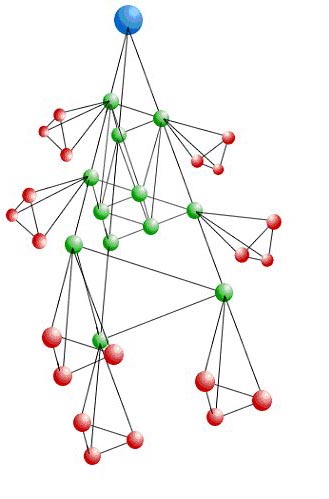
|
HOME
|
|
Links
Networks - much is made of 'Social Networks. However, ”group networks” are just as important. Commented on in Barabasi’s book “Linked” - the study of networks has investigated their structure at a level of detail only possible with the use of computer models. In essence, the types of connection in any network are important. For example, a small network will have a number of strong links, such as a Family, Club or Church and these strong links will hold firm under a lot of social pressure. On the other hand, they are not much use to the member if faced with a new and novel problem; this is where they use their external contacts to find the help they need. It’s essential in life to have these external connections and these are called weak links. : What we experience with community groups such as these is a high degree of isolation when members have very little contact with similar groups - even those within their immediate vicinity. This inevitably means the group does not have opportunities for experiencing or hearing about new ideas. This is what it's like
On the other hand a group with strong internal links and many weak and frequently used links to other groups, will have a wider experience and it will find that it is better known in the community. It will have
A well connected Community Group is enjoyable, it's well run and you learn something and contribute |
